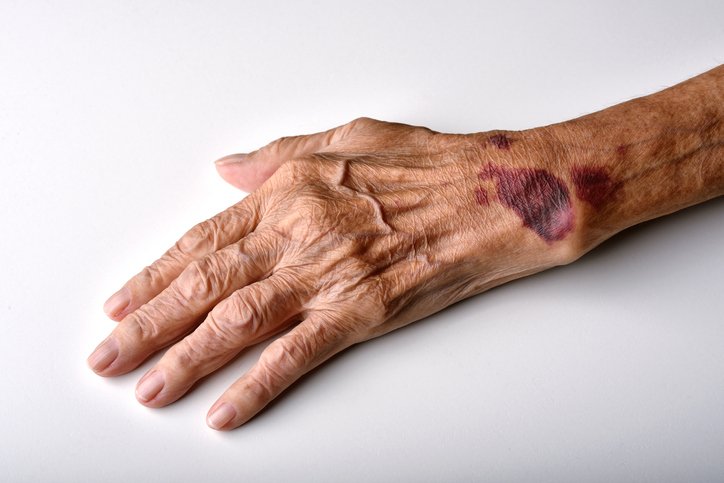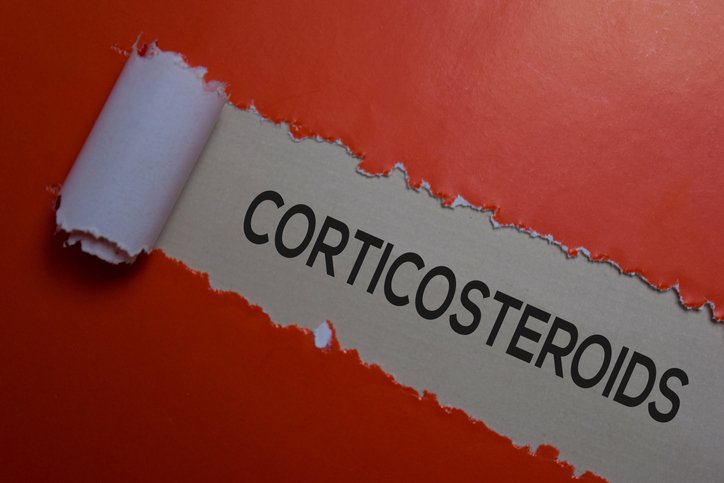When Skin Becomes Fragile: Understanding Dermatoporosis
What Is Dermatoporosis?
I have noticed throughout the years that many of my older relatives start to have thin skin that bruises easily and, in some cases, tears and oozes. The skin takes on a purplish hue, which is commonly called solar purpura, senile purpura, or actinic purpura. I have never heard them make a big deal about their skin condition, which is surprising because it looks unsightly, uncomfortable, and rather worrisome.
It turns out their condition is very common, not generally considered much of a medical concern until the later phases of the condition and is called dermatophytosis, which is a chronic condition characterized by skin fragility resulting from both intrinsic aging and external factors such as ultraviolet (UV) radiation and pollution. Dermatoporosis is similar to osteoporosis because the connective tissue matrix in both is compromised. This condition can be divided into two forms: primary, which is related to age and sun exposure, and secondary, which is induced by medications. It affects up to 37.5% of individuals over the age of 65 and often manifests on the upper limbs with symptoms like skin atrophy, purpura (purple spots), and pseudo-scarring.
Stages of Dermatoporosis
The condition progresses through four distinct stages:
Stage I: Early indicators include skin atrophy and senile purpura. This stage is generally of little concern.
Stage II: Skin fragility leads to lacerations, which can be classified as small (less than 3 cm) or large (greater than 3 cm) tears.
Stage III: Hematomas develop, beginning with superficial hematomas (Stage IIIa) and advancing to deeper, dissecting hematomas (Stage IIIb). Hematomas are localized swellings full of blood.
Stage IV: In severe cases, skin necrosis (skin death) may occur, potentially resulting in systemic infections and life-threatening complications.
Causes
1. The Hyalurosome and Corticosteroids
At the molecular level, the hyalurosome—a structure found within epidermal keratinocytes (skin cells)—plays a central role in skin health. This organelle is composed of components such as the hyaluronic acid receptor CD44 and epidermal growth factor. It is essential for maintaining skin elasticity and facilitating repair processes. However, long-term use of corticosteroids can disrupt the function of the hyalurosome, weakening the skin’s structural integrity and accelerating atrophy.
2. Viscoelastic Changes
Skin affected by dermatoporosis demonstrates increased residual deformation and altered viscoelastic properties. These changes reduce skin elasticity, making it more susceptible to tearing from minimal trauma.
3. Environmental Stressors
Chronic exposure to UV rays depletes protective antioxidants like vitamin C in the skin, further diminishing its ability to resist damage
Complications Associated with Dermatoporosis
1. Lacerations and Delayed Healing
Starting at Stage II, patients begin to experience skin tears from even minor blunt trauma. Due to impaired wound healing, these injuries are susceptible to infections and may require extended recovery periods.
2. Deep Dissecting Hematomas
Hematomas, commonly observed in the elderly on long-term corticosteroid therapy, present as painful swellings and may lead to skin necrosis. Urgent surgical intervention is necessary to prevent complications.
3. Skin Failure in the ICU
In severe cases, dermatoporosis can lead to acute skin failure in intensive care units (ICUs). This condition is characterized by impaired barrier function and significant fluid loss, making it particularly dangerous for patients with comorbidities such as respiratory failure or sepsis.
In severe cases, dermatoporosis can lead to acute skin failure in intensive care units (ICUs). This condition is characterized by impaired barrier function and significant fluid loss, making it particularly dangerous for patients with comorbidities such as respiratory failure or sepsis.
Prevention and Treatment
1. Preventive Measures
Limit UV Exposure: Regular use of broad-spectrum sunscreen can reduce photodamage. This applies to early life, so once the condition happens, it is too late.
Avoid Smoking and Pollution: Environmental toxins accelerate skin aging.
Corticosteroid Caution: Restrict long-term use of systemic and topical corticosteroids whenever possible.
Get Adequate High-quality Protein: Animal-based proteins, including the skin and connective tissue, should be included in the diet. Since seniors absorb less protein, as much as 1 gram per pound of body weight can be safely consumed for most people.
2. Therapeutic Interventions
While advanced dermatoporosis poses challenges, early-stage treatment offers promising results.
Hyaluronic Acid (HA) Fragments: In clinical studies, intermediate-size HA fragments improved skin atrophy and increased hyalurosome activity when applied topically.
Retinaldehyde and HA Synergy: This combination enhances skin elasticity and promotes epidermal repair.
Alpha-Hydroxy Acids (AHAs): Long-term application of AHAs improves skin thickness and elasticity.
Topical Vitamin C: Clinical trials have shown that 5% L-ascorbic acid reduces Bateman purpura and boosts skin elasticity.
3. Advanced Care for Severe Cases
For deep dissecting hematomas or necrotic ulcers, surgical interventions like debridement, skin grafting, or secondary intention healing may be required. ICU patients with dermatoporosis benefit from comprehensive wound management and infection control protocols.
Raising Awareness
Dermatoporosis is more than just a cosmetic concern; it significantly affects the quality of life and increases morbidity, especially among the elderly and patients in intensive care units (ICUs). It is crucial for healthcare providers, including dermatologists and general practitioners, to be aware of this condition to ensure early diagnosis and intervention.
Conclusion
Dermatoporosis is a chronic and progressive condition that significantly affects skin health and overall well-being. While factors such as aging and the environment contribute to its development, timely interventions can lessen its impact. Preventive measures, like UV protection early in life, as well as advanced treatments using hyaluronic acid and retinaldehyde, equip dermatologists to manage this condition effectively. However, more research and awareness are needed to address the challenges associated with late-stage dermatoporosis, especially in vulnerable populations. Early recognition of the signs and the adoption of a comprehensive care strategy can help preserve skin integrity and enhance patient outcomes.
Source:
Wollina U, Lotti T, Vojvotic A, Nowak A. Dermatoporosis - The Chronic Cutaneous Fragility Syndrome. Open Access Maced J Med Sci. 2019 Aug 30;7(18):3046-3049. doi: 10.3889/oamjms.2019.766. PMID: 31850120; PMCID: PMC6910795.





